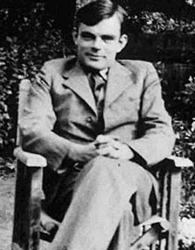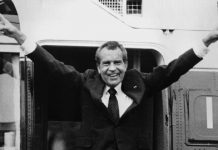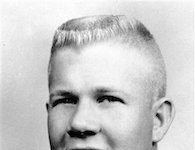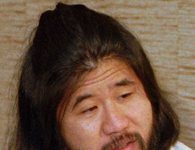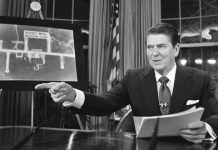On March 31, 1952, Alan Turing, computer technology pioneer and breaker of the Nazi Enigma code, was put on trial for homosexual acts. Found guilty and ordered to undergo humiliating hormone therapy, Turing committed suicide two years later.
Bletchley Park Hero Turing Convicted for Gross Indecency
Alan Turing was a computer pioneer and key part of British code-breaking efforts during World War II. But his homosexuality caused him personal and legal problems in post-war Britain, and eventually led to his suicide.
In 1952, he was arrested and tried on charges of having homosexual relations with a young man from Manchester. Turing made no attempts to deny his relationship, instead arguing that there was nothing wrong with his actions.
Found guilty of gross indecency, he was presented with a choice of prison or chemical therapy. He chose to receive injections of estrogen for a year, a procedure designed to curb his libido. This caused the humiliating enlargement of his breasts and an increase in body fat.
On June 7, 1954, before going to bed, Turing ate an apple injected with poison and was found dead the following morning. Though he left no note, his death is believed to be a suicide; biographer Andrew Hodges suggests that carried out the suicide in that way to convince his mother that he accidentally ingested cyanide while conducting an experiment.
Sources in this Story
- The Alan Turing Home Page: Alan Turing: a short biography
- The New Yorker: Code-breaker
- Time: Time 100 People of the Century: Alan Turing
- PBS: NOVA: Decoding Nazi Secrets
- Turing Archive for the History of Computing: Biography of Turing
- The Guardian: The enigma of Alan Turing
- The Daily Telegraph: Gordon Brown issues posthumous apology to Bletchley Park codebreaker
Biography: Alan Turing
Alan Turing was born in London in 1912. As a young teenager, he developed a crush on a male classmate, who soon died of tuberculosis. “This loss shattered Turing’s religious faith, writes Time, “and led him into atheism and the conviction that all phenomena must have materialistic explanations.”
Turing went on to study at King’s College in Cambridge, where he developed the Universal Turing Machine. The machine “embodies the essential principle of the computer: a single machine which can be turned to any well-defined task by being supplied with the appropriate program,” writes Hodges.
During World War II, Turing worked at Bletchley Park, the headquarters of Britain’s efforts to break German military codes, particularly the Enigma cipher. Building on Polish efforts, Turing devised a machine, called the Bombe, in spring 1940 that could eliminate billions of possibilities for the daily setting of the Enigma machine, allow code-breakers to decode messages within hours.
By the end of 1941, Turing developed a process, known as Banburismus, to crack the more complex Enigma code used by the German navy. As the war progressed, Bletchley Park code-breakers were able to decode thousands of messages a day, providing Britain’s defenses with vital intelligence.
In the close confines of Bletchley, Turing gained a reputation for being eccentric, famously riding his bike while wearing a gas mask because he suffered from hay fever. Bletchley worker Sarah Baring described him as “very shy of women,” but he did briefly have a relationship with a female co-worker. Though Turing admitted to her that he was gay, she accepted his engagement proposal; Turing, however, later called off the marriage.
After the war, Turing went to work for the National Physical Laboratory, where he attempted by build the Automatic Computing Engine, an electronic stored-program computer. His ambitious plans, however, were slowed by bureaucratic complications and shot down by NPL engineers, who built the simpler Pilot Model ACE.
In 1948, a frustrated Turing left the NPL for the Royal Society Computing Machine Laboratory at Manchester University, which had recently beat the NPL in building the first stored-program computer.
In 1950, Turing published a paper in the journal Mind that proposed a test, now known as the Turing test, for determining whether a machine has intelligence: if a human asking questions of a human and a machine cannot tell the difference between the two based on their answers, then the machine has intelligence. Turing theorized that one day it would be possible to build a machine with artificial intelligence.
Turing is remembered as a father of the modern computer and artificial intelligence, a war hero and a gay martyr.
In 2009, British Prime Minister Gordon Brown issued an apology to Turing. “He truly was one of those individuals we can point to whose unique contribution helped to turn the tide of war,” said Brown. “The debt of gratitude he is owed makes it all the more horrifying, therefore, that he was treated so inhumanely…Alan and the many thousands of other gay men who were convicted as he was convicted, under homophobic laws, were treated terribly.”
Reference: Primary Documents and Photographs
Turing Archive for the History of Computing provides historical documents related to Alan Turing and the development of computing. The University of Canterbury in New Zealand and the University of San Francisco host the site.
The Turing Digital Archive is filled with “mainly unpublished personal papers and photographs of Alan Turing from 1923–1972.” The University of Southampton in Britain maintains the site.
Related: “The Imitation Game”
In 2014, “The Imitation Game,” which starred Benedict Cumberbatch and Keira Knightley, examined Turing’s life, work, and death.


